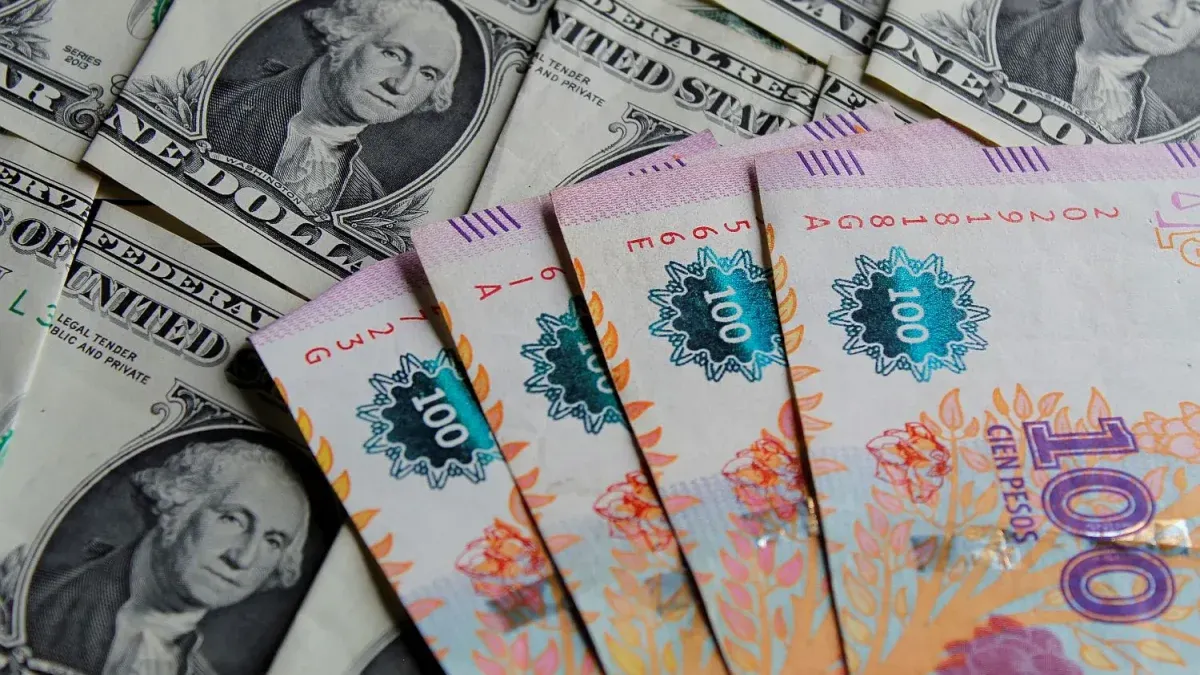The Minister of Economy, Luis Caputopredicted a few days ago that Argentina will be more expensive in dollars and said “more” because the data reflect that this is already visible on the shelves. And, measured in dollars at the official exchange rate, of 46 goods surveyed, 38 are above the international average. For example, he says, a liter of milk in our country costs US$2, while on average, in the region, it is US$1.19.
This is reflected in a report by the consulting firm PxQ led by the economist Emmanuel Alvarez Agiswhich seeks to show how expensive Argentina already is in dollars. “Every so often this question comes up again and surprisingly the answer changes in short periods of time. Although it is complex to say this for the economy as a whole, “A series of variables can be analyzed that give indications of how expensive/cheap the Argentine economy is compared to other countries in the region,” says PxQ.
The first step in the consultancy’s analysis is to compare the prices of a set of goods. For example, he says, a litre of milk in Argentina costs US$2, while on average in the countries of the region it costs US$1.19. Measured at the parallel exchange rate, milk in our country costs US$1.45, so the difference is smaller but it is still more expensive than in other countries. “The detail: Argentina is a milk producer,” he warns.
While there are exceptions, PxQ points out that this happens with almost all foods. At the other end, A cell phone in Argentina is between 40% and 130% more expensive depending on the official or parallel exchange rate. Something similar happens with clothing, other electronic equipment and automobiles.
pxq.png
PxQ analyzed that practically all foods reflect a higher cost in dollars
Food is more expensive when measured at the blue and official dollar rates
“A year ago we pointed out that the prices of Argentine products were among the most expensive in the region measured at the official exchange rate, while at the parallel exchange rate Argentina was cheap for food and beverages and at an average level in clothing, vehicle acquisition, medicines and electronics. As of June 2024, the main difference observed is that Food is starting to become expensive when measured at the parallel exchange rate and the rest of the goods are very expensive (up to 150% difference in household appliances),” says PxQ.
In summary, of 46 goods surveyed by Alvarez Agis (food, clothing, electronics, cars and fuel) in 38 cases the price in dollars measured at the official exchange rate in Argentina is above the international average.
The exchange rate volatility and high local inflation rate make the results of this comparison vary considerably in a short period of time. The June 2023 snapshot concluded that the price of food in Argentina measured at the CCL exchange rate was, on average, 50% below the average of the countries in the region, while at the official exchange rate prices were at similar levels.
Electronics and clothing
In electronics and clothing, on the other hand, at the official exchange rate Argentina was clearly expensive while at the parallel exchange rate the price level was similar to that of the countries in the region.
“If we look at the evolution of food prices measured at both the official and parallel exchange rates, It can be seen that Argentina was where the greatest increases occurred. That is, one year from now, Food prices measured in dollars have risen significantly and there is no indication that this was a general phenomenon in the rest of the countries, but rather a problem specific to Argentina.”says PxQ.
Another way to look at it, they say, is by analyzing the relationship between food prices in Argentina at the official exchange rate and prices in other countries over the past year. In December 2023, after the devaluation, most of the products observed by the consultancy were cheaper in Argentina, while as the months go by and the official exchange rate appreciates, more Argentine products are becoming the most expensive in the regional comparison.
As a second approach, PxQ says that the evolution of food prices since 2011 can be observed through the food and beverage division of the CPI at the official and parallel exchange rates. “This analysis allows us to compare the price level in historical perspective. Not only have food prices become more expensive in dollars during the last few months, but also the level measured at both the official and parallel exchange rates is above the average of the last 12 years. Taking the 2016-18 period as a reference, Food prices at official exchange rates are +20% above average“, he says.
Argentina is expensive in dollars: what happens with other goods?
The analysis can be repeated for other goods whose prices are recorded by Indec. In this case the result is heterogeneous. In vehicle acquisition prices are +11% (at CCL) and +46% (at official TC) above the period 2016-18. Medicines, +2% and +35%, respectively. Household equipment and maintenance -26% and -2% below. Clothing -10% and -32% also below the period 2016-18.
This analysis, if complemented by the regional comparative photo, could serve to say, for example, that although clothing is more expensive than in other countries in the region, in historical comparison it is cheaper than in 2016-18.
How are wages compared to the main consumer goods?
“Finally, The question of how expensive or cheap Argentina is must incorporate the salary component. For this calculation we analyzed the salaries of the different sectors of the economy in CCL dollars adjusted for inflation and compared them with other periods in Argentine history,” he said.
In the first months of 2024, although it is observed that the bulk of registered workers achieved salary increases above the variation of the parallel exchange rate, Salaries measured in dollars continue to be low in historical comparison. The year 2024 is within the 3 stages of lowest dollar wages in the last 30 years along with 2023 and the post-convertibility crisis period (2002-2007). Compared to 2016-19, formal income measured in hard currency is between -60% and -35% lower,” concluded the Alvarez Agis consultancy.
Source: Ambito




